Parsley is more than just a garnish on the side of the plate – it’s a vibrant, versatile herb that can bring a burst of flavor to any dish.
As an avid gardener and culinary enthusiast, I’ve discovered that growing parsley in my garden not only adds a fresh ingredient to my kitchen but also brings a lush green touch to my herb section.
Whether you have a sprawling garden or a small windowsill in a city apartment, parsley is a delightful herb to grow.
In this article, we’ll explore the benefits of growing parsley, highlight a few of my favorite varieties, and share some essential care tips.
Benefits of Growing Parsley
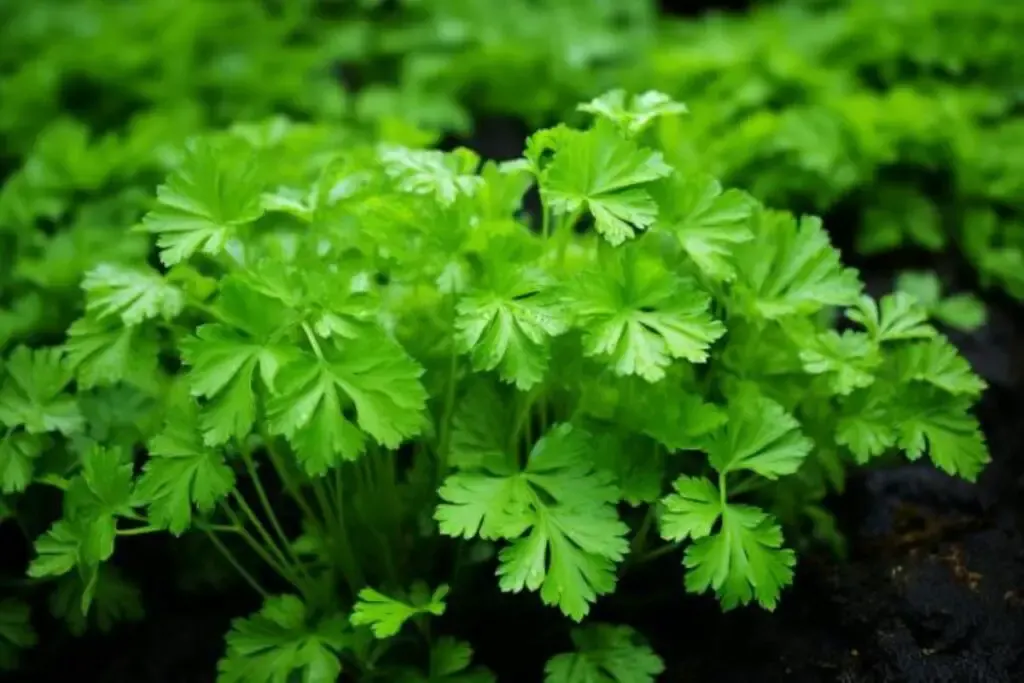
1. Nutritional Value
Parsley is a powerhouse of nutrients. It’s packed with vitamins A, C, and K, and is a great source of iron and antioxidants. Including fresh parsley in your diet can boost your immune system and improve your overall health.
2. Aromatic and Flavorful
Fresh parsley has a much more vibrant flavor compared to the dried version. It can enhance the taste of salads, soups, and stews. Plus, its fresh, green aroma is a delight in any kitchen.
3. Easy to Grow
One of the best things about parsley is its ease of cultivation. It’s a hardy herb that can grow in a range of conditions, making it perfect for beginners or those with less-than-green thumbs.
My Favorite Parsley Varieties
When it comes to parsley, there are several varieties to choose from, each with its unique flavor and growth habits.
Here are three of my favorites:
1. Curled Parsley (Petroselinum crispum)
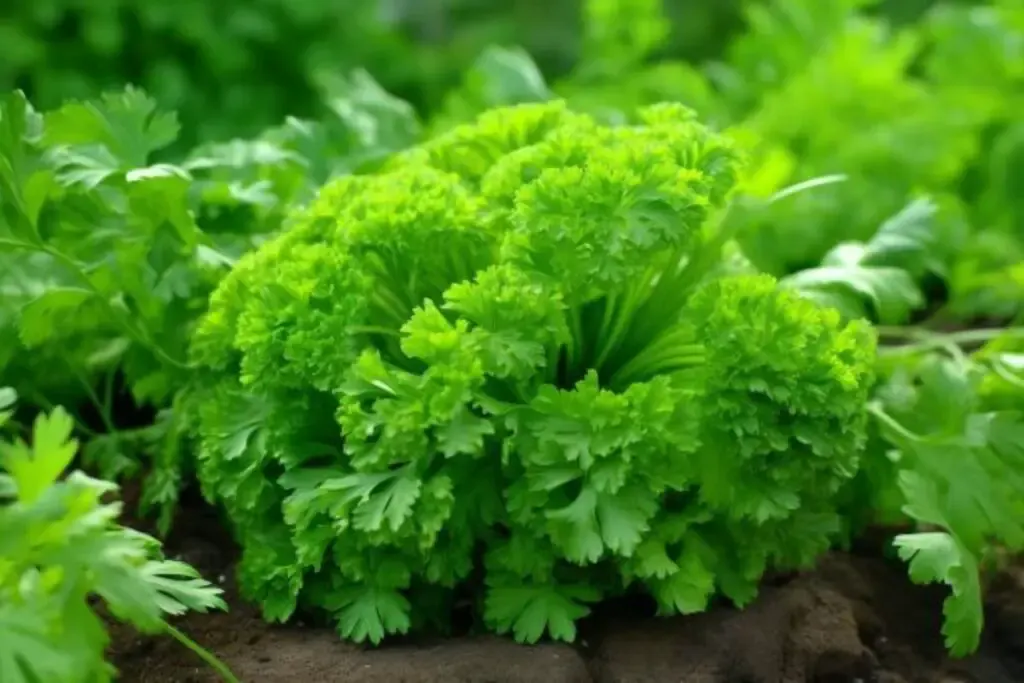
This is the classic parsley variety, often used as a garnish. It has bright green, curly leaves that are not only decorative but also have a mild, slightly peppery flavor.
It’s also the easiest to grow, making it a great choice for beginners.
2. Italian Flat-Leaf Parsley (Petroselinum neapolitanum)
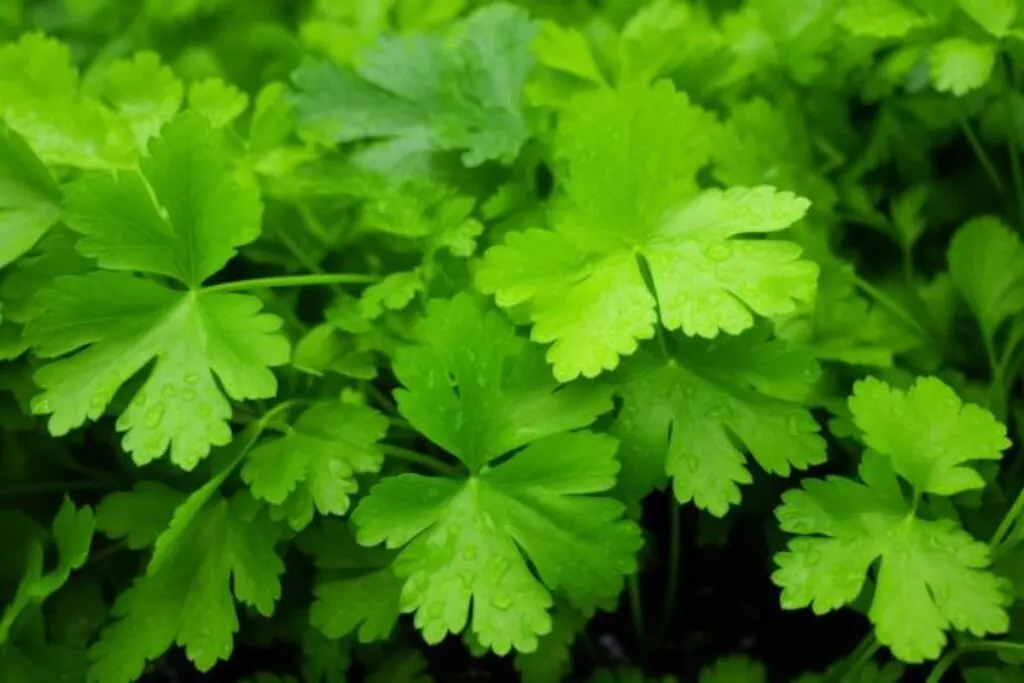
This variety has flat, dark green leaves and a stronger, more robust flavor than curled parsley. It’s a staple in Italian cooking and is excellent in pesto, salads, and as a flavor enhancer in many dishes.
3. Hamburg Parsley (Petroselinum crispum var. tuberosum)
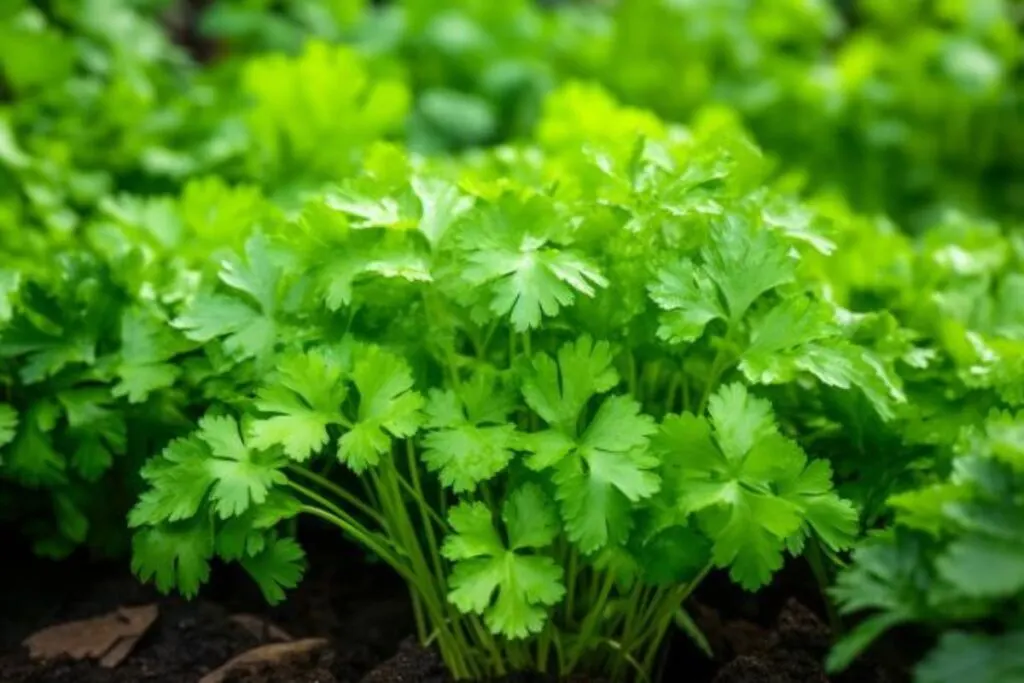
Less common but equally fascinating, Hamburg parsley is grown for both its leaves and its large, edible root, which tastes somewhat like a cross between parsley and parsnip.
This variety is perfect for adventurous gardeners looking to try something different.
Parsley Care
Proper care is essential for growing lush, healthy parsley. This herb is not overly demanding, but it does have specific needs that, when met, can lead to a bountiful harvest.
Let’s explore the key aspects of parsley care, including planting, light requirements, soil type, water needs, temperature and humidity preferences, and fertilizer use.
Planting
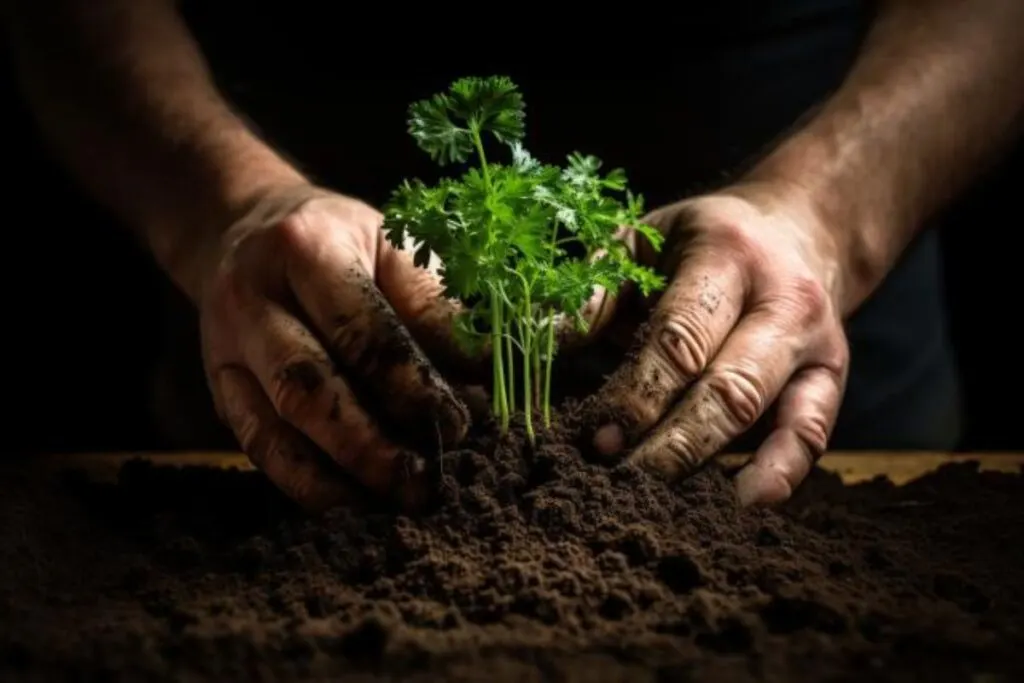
Parsley seeds can be sown directly in the garden or started indoors. If planting outside, wait until the soil can be worked in the spring.
Parsley seeds can be slow to germinate, often taking 2-4 weeks. Soaking the seeds overnight can speed up this process.
Plant the seeds about 1/4 inch deep and 6 inches apart. If starting indoors, transplant the seedlings when they have a few true leaves and the danger of frost has passed.
Light
Parsley grows best in full sun to partial shade. Ideally, it should receive at least 6 hours of sunlight per day.
If you’re growing parsley indoors, a sunny windowsill or a spot under grow lights will ensure your plant gets enough light.
Soil
This herb prefers rich, well-draining soil with a pH between 6.0 and 7.0. Before planting, I like to work with some organic matter or compost to enrich the soil. Parsley does not do well in heavy clay or overly sandy soils.
Water
Parsley likes consistent moisture. Water the plants evenly to keep the soil slightly moist, but be careful not to overwater.
Overly soggy soil can lead to root rot. In my experience, watering parsley deeply once a week is usually sufficient, but this can vary depending on climate and soil type.
Temperature and Humidity
Parsley is a cool-season herb, thriving in temperatures between 50°F and 70°F. It can tolerate light frosts, which makes it suitable for early spring and late fall planting.
While parsley can grow in high humidity, it’s important to ensure good air circulation around the plants to prevent fungal diseases.
Fertilizer
Parsley is not a heavy feeder, but it does benefit from occasional fertilization. I recommend using a balanced, all-purpose liquid fertilizer every 4-6 weeks during the growing season.
Be cautious not to over-fertilize, as this can lead to lush foliage with diminished flavor.
Harvesting Parsley
Harvesting parsley is straightforward and, when done correctly, can encourage fuller, more robust growth.
The best method is to snip off the outer, more mature leaves at the base of the stem, allowing the inner, younger leaves to continue growing.
You can start harvesting when the plant has at least eight leaves. Regular harvesting not only provides you with a fresh supply of parsley but also promotes healthy, bushy growth in the plant.
Pruning
Pruning parsley isn’t typically necessary for health, but it can be beneficial for shaping the plant and encouraging new growth.
If you notice any yellow or damaged leaves, remove them to keep the plant healthy and tidy. Also, cutting back the entire plant by about a third mid-season can rejuvenate and invigorate it, leading to fresh new growth.
Propagating
Parsley can be propagated by seeds, which is the most common method, or by root division. To propagate from division, carefully split the root ball of an established plant and replant the sections.
This method can be a bit tricky with parsley, as it doesn’t always respond well to root disturbance, so I generally recommend sticking with seeds.
How to Grow Parsley From Seed
Growing parsley from seed is a simple and rewarding process. To speed up the slow germination process, soak the seeds overnight in warm water.
Sow them directly in the garden or in a seed-starting mix if you begin indoors. Cover them lightly with soil, as parsley seeds need some light to germinate.
Keep the soil moist but not soggy, and be patient – germination can take 2-4 weeks. Once the seedlings have several true leaves, thin them to stand 6 inches apart.
Growing in Pots
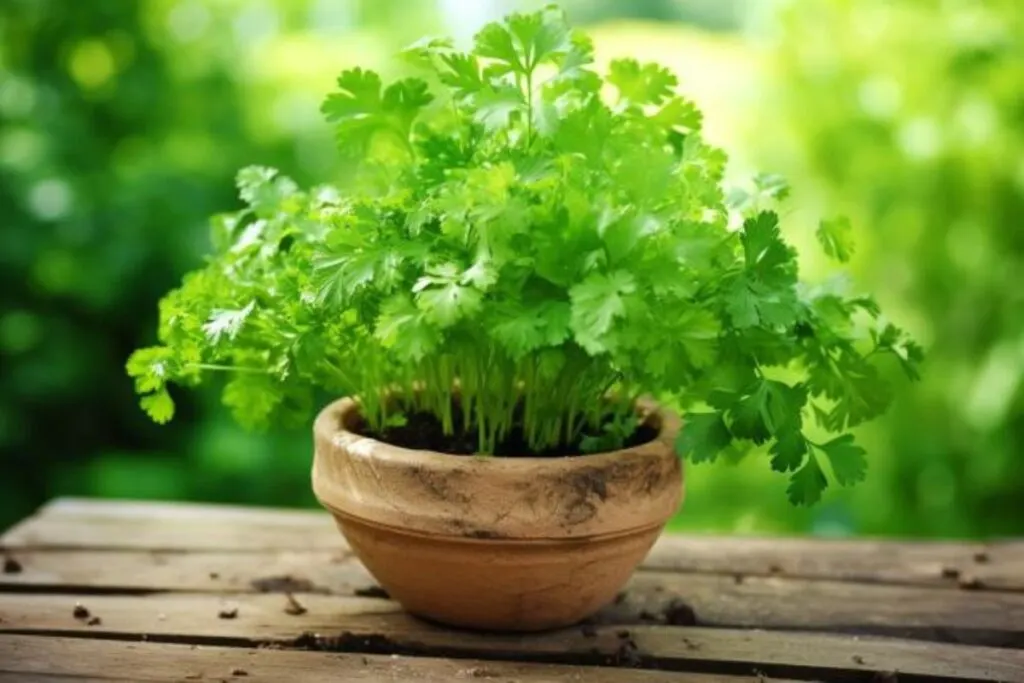
Parsley is an excellent candidate for container gardening. Choose a pot that is at least 8 inches deep and has good drainage.
Fill it with a quality potting mix, and plant the seeds or seedlings as you would in the garden. Place the pot in a sunny location and water regularly to keep the soil evenly moist.
Growing parsley in pots makes it easy to bring the plants indoors during extreme weather, ensuring a year-round supply of fresh herbs.
Overwintering
Parsley is a hardy herb and can often survive mild winters outdoors with a bit of preparation. In colder regions, mulch around the base of the plant to provide insulation.
If you grow parsley in pots, you can easily bring them indoors during winter. Place them near a sunny window to continue harvesting throughout the season.
In some climates, parsley will go dormant over winter and then regrow in the spring.
Transplanting
Transplanting parsley can be a bit delicate because it doesn’t like to have its roots disturbed. If you start seeds indoors, use peat pots that can be planted directly into the ground to minimize root shock.
When transplanting, handle the root ball gently and make sure to water the plant well after moving it to its new location.
Common Pests & Diseases
Parsley is generally quite robust but can occasionally be troubled by pests like aphids and whiteflies. These can usually be managed by spraying the plants with water or using insecticidal soap.
As for diseases, parsley can be susceptible to root rot in overly wet conditions and leaf spots. Ensure good drainage and air circulation to prevent these issues.
Gardening is a journey of learning and discovery, and growing parsley is no exception. Whether you’re sprinkling it over a dish for a fresh flavor or admiring its vibrant green leaves in your garden, parsley brings its own special magic.
Embrace the experience, and don’t hesitate to experiment – after all, each plant has its own story to tell in your garden!

